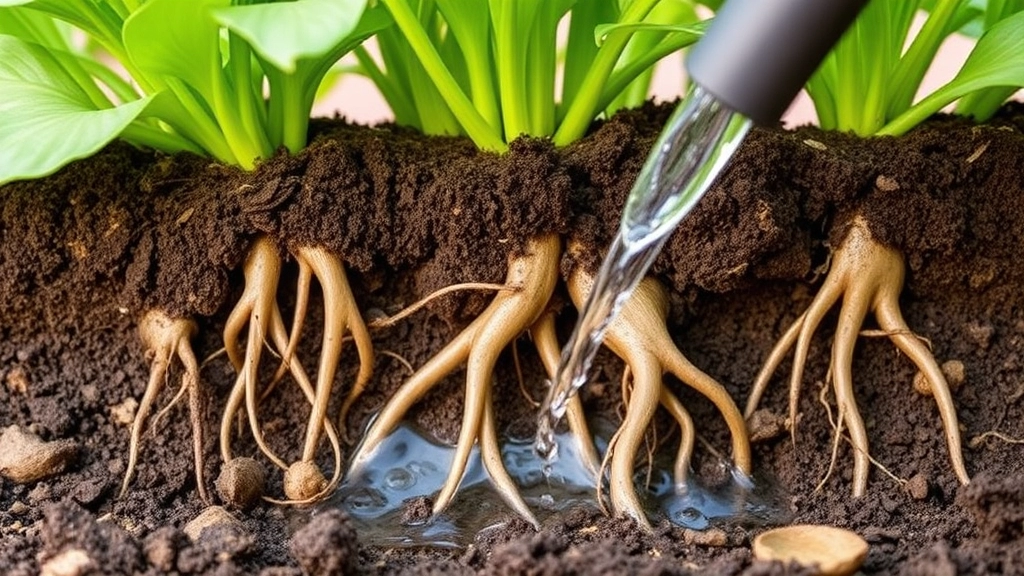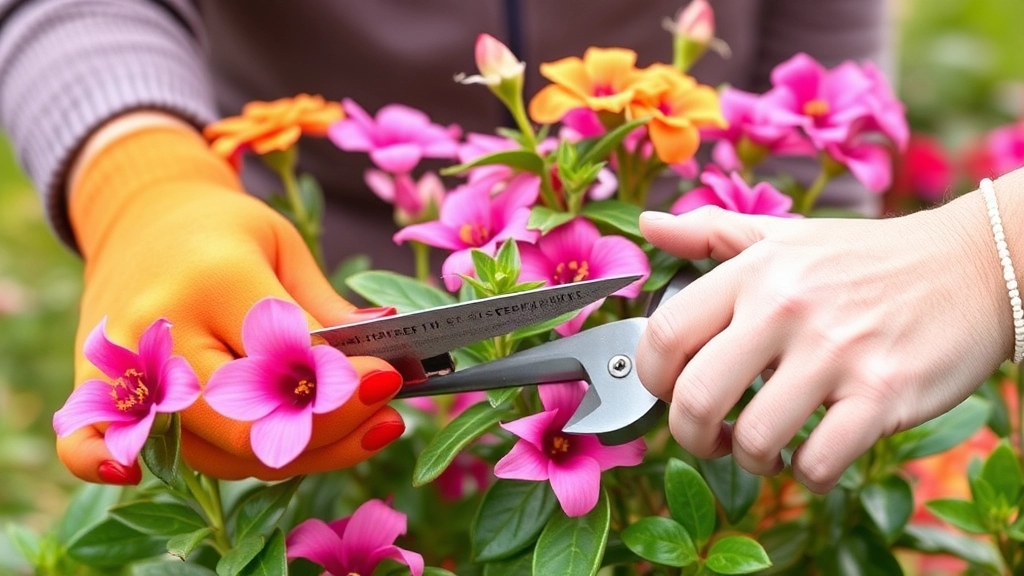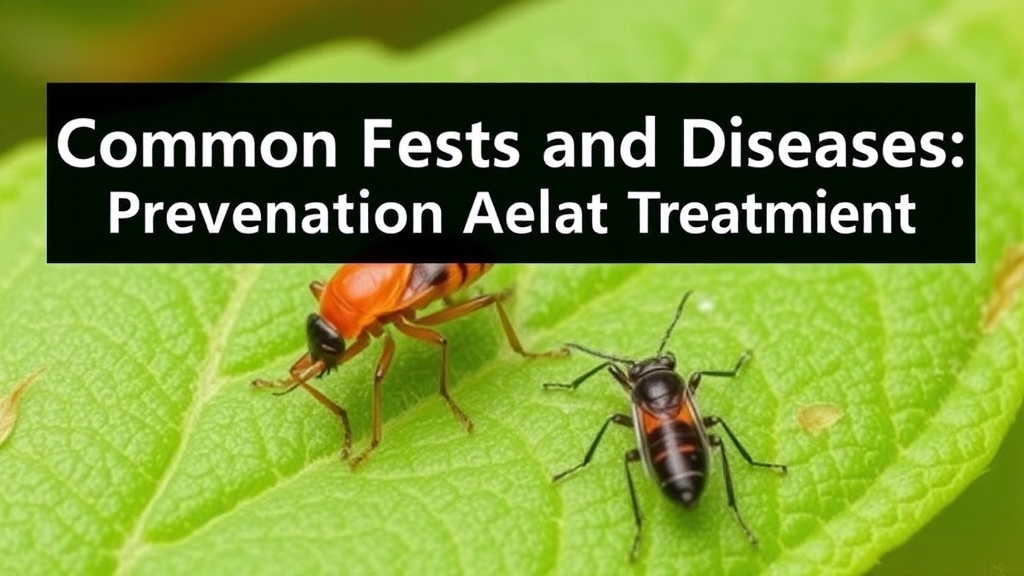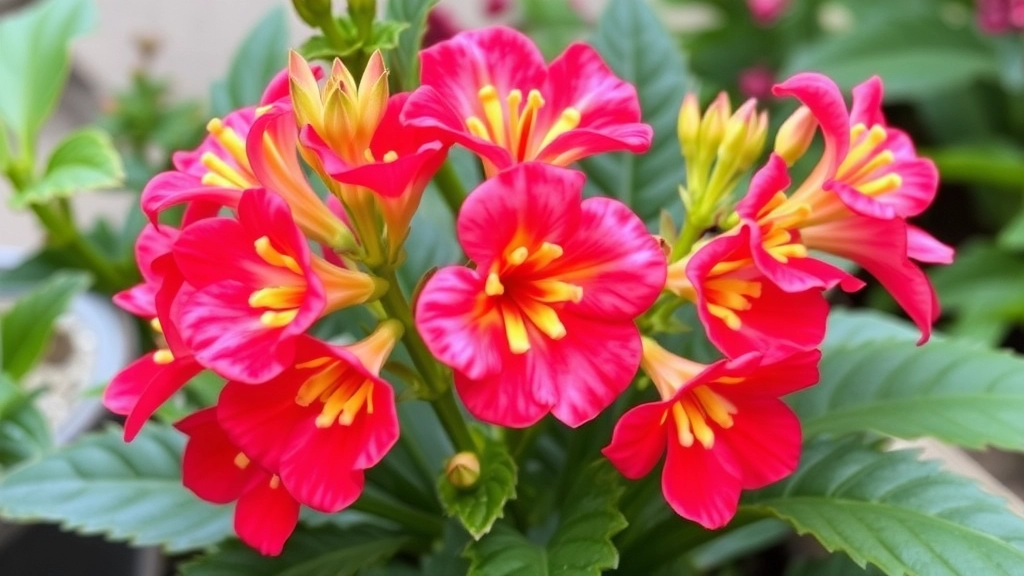Kalanchoe Flaming Katy Care Guide
If you’re looking to add a splash of colour to your home, the Kalanchoe Flaming Katy is a fantastic choice. This vibrant plant is not only visually appealing but also relatively easy to care for. In this guide, I’ll walk you through everything you need to know to keep your Flaming Katy thriving, from optimal light conditions to watering tips.
Light Conditions
First off, let’s talk about light. The Kalanchoe Flaming Katy thrives in bright, indirect sunlight. Too much direct sun can scorch its leaves, while too little light can hinder its blooming. Finding the right balance is key.
Watering Guidelines
Next, we’ll dive into watering guidelines to prevent root rot, ensuring your plant stays healthy and vibrant.
Optimal Light Conditions for Flaming Katy
Are you struggling to get your Flaming Katy to thrive? One of the key factors for its success is ensuring it receives the right light conditions.
Flaming Katy, or Kalanchoe Blossfeldiana, flourishes in bright, indirect sunlight. Here’s how to create the perfect lighting environment:
- Ideal Location: Place your plant near a south or west-facing window. This ensures it gets ample light without the harshness of direct sun.
- Duration: Aim for about 6 hours of light daily. If natural light is limited, consider using grow lights to supplement.
- Signs of Insufficient Light: If your plant starts to stretch or become leggy, it’s a clear sign it needs more light.
- Avoiding Burn: Direct sunlight can scorch the leaves. If you notice browning or crispy edges, move it to a spot with filtered light.
- Seasonal Adjustments: In winter, when light levels drop, rotate your plant or move it closer to the window to maintain optimal exposure.
By ensuring your Flaming Katy receives the right light conditions, you set the stage for vibrant blooms and healthy growth. For more detailed tips, you can check out our Flowering Kalanchoe Care Tips and our Complete Care Guide for Kalanchoe Blossfeldiana.
Watering Guidelines to Prevent Root Rot

So, you’ve got your Flaming Katy and you’re excited to see it thrive. But wait, have you thought about how much water it really needs? Overwatering is a common concern, and it can lead to root rot, which is a total bummer for your plant.
Here’s the lowdown on watering your Kalanchoe Blossfeldiana:
- Check the Soil: Always poke your finger about an inch into the soil. If it feels dry, it’s time to water. If it’s still moist, hold off for a bit longer.
- Water Thoroughly: When you do water, make sure to give it a good drink. Pour water until it seeps out of the drainage holes at the bottom of the pot. This ensures the roots get the moisture they need.
- Frequency Matters: In the growing season (spring and summer), you might need to water every week or so. In the dormant season (fall and winter), cut back to every couple of weeks.
- Use Well-Draining Pots: Choose pots with drainage holes. This is crucial to prevent water from sitting at the bottom and causing root rot.
- Watch for Signs: If the leaves start to yellow or look mushy, it might be a sign of overwatering. Adjust your watering schedule accordingly.
By following these simple guidelines, you can keep your Flaming Katy happy and healthy.
Choosing the Right Soil for Kalanchoe Blossfeldiana
When it comes to caring for your Flaming Katy, selecting the right soil is crucial for its overall health and blooming potential.
What Soil Should You Use?
Kalanchoe Blossfeldiana thrives in well-draining soil. Using the right mix can prevent common issues such as root rot, which is something many plant enthusiasts worry about. Here are some key points to consider:
- Cactus or Succulent Mix: A pre-made cactus or succulent soil mix is ideal. This type of soil typically contains sand or perlite, which aids drainage.
- DIY Soil Mix: If you prefer a homemade option, combine:
- 50% potting soil
- 25% perlite
- 25% coarse sand
This blend ensures your plant gets the nutrients it needs while preventing water retention.
Why Drainage Matters
Proper drainage is essential for Kalanchoe Blossfeldiana. Too much moisture can lead to root rot, which can be a nightmare for any plant lover.
- Pot Choice: Always choose pots with drainage holes. This allows excess water to escape, keeping the roots dry.
- Soil Testing: If you’re unsure about your soil’s drainage capabilities, perform a simple test. Water the soil and see how quickly it drains. If it retains water for too long, consider changing your mix.
Additional Tips
- pH Level: Aim for a slightly acidic to neutral pH level (around 6.0 to 7.0). This range supports nutrient absorption.
- Repotting: If you notice your plant isn’t thriving, it might be time to repot with fresh soil. This can rejuvenate the plant and encourage new growth.
Choosing the right soil for your Flaming Katy not only supports its health but also enhances its vibrant blooms. For more detailed care tips, check out our Kalanchoe Blossfeldiana leaf care tips and learn about the causes and solutions for non-flowering Kalanchoe.
Temperature and Humidity Needs of Flaming Katy

When it comes to caring for your Flaming Katy, understanding its temperature and humidity preferences is essential. Have you ever wondered why your Kalanchoe Blossfeldiana isn’t thriving?
Ideal Temperature Range
Flaming Katy prefers a warm environment, ideally between 20°C to 25°C (68°F to 77°F) during the day. At night, a slight drop to 15°C to 18°C (59°F to 64°F) is acceptable.
- Avoid extreme temperatures: Keep your plant away from drafts, heaters, or air conditioning vents.
- Winter care: During colder months, ensure the temperature does not fall below 10°C (50°F), as this can stress the plant.
Humidity Levels
Kalanchoe Blossfeldiana thrives in moderate humidity. Here’s how to manage it:
- Ideal humidity: Aim for 40% to 60% relative humidity.
- Avoid overly humid environments: High humidity can lead to fungal issues.
- Using a humidity tray: Place your pot on a tray filled with pebbles and water to maintain optimal moisture levels without waterlogging the roots.
Tips for Maintaining Conditions
- Monitor with a thermometer and hygrometer: These tools help you keep track of the temperature and humidity levels in your home.
- Ventilation: Ensure good air circulation around your plant to prevent stagnant air.
How to Prolong Flowering in Kalanchoe
Have you ever admired a Flaming Katy in full bloom and wished it could last longer?
Prolonging the flowering period of Kalanchoe, or Flaming Katy, is easier than you might think.
Here are some practical tips to help you enjoy those vibrant blooms for as long as possible:
- Light Exposure: Ensure your Kalanchoe receives bright, indirect sunlight. Too much direct sunlight can scorch the leaves, while too little can stunt flowering. Aim for around 12 hours of light each day.
- Watering Schedule: Water your plant thoroughly but allow the soil to dry out between waterings. Overwatering can lead to root rot, which may halt flowering.
- Temperature Control: Keep your Kalanchoe in a warm environment, ideally between 18°C to 24°C. Avoid placing it in drafty areas or near heating vents, as temperature fluctuations can stress the plant.
- Fertilization: Feed your Kalanchoe with a balanced, water-soluble fertiliser every month during the growing season. This encourages robust growth and more blooms.
- Pruning: After the flowering period, remove spent flowers and any dead leaves. This not only tidies the plant but also encourages new growth. For more detailed pruning techniques, check out our best tips and techniques for pruning Kalanchoe plants.
- Rest Period: Allow your Kalanchoe a rest period after blooming. Reduce watering and stop fertilising for a few weeks. This helps the plant gather strength for its next blooming cycle. For a comprehensive guide on caring for Kalanchoe plants, visit our expert tips for thriving Kalanchoe plants.
Pruning and Deadheading for Healthier Growth

So, you’ve got your Flaming Katy thriving, but have you thought about pruning and deadheading?
Many plant lovers often worry about how to keep their Kalanchoe Blossfeldiana looking its best.
Why Prune?
Pruning helps shape your plant and encourages new growth. It’s like giving your Flaming Katy a fresh haircut!
When to Prune?
- After flowering is the best time.
- If you notice any leggy growth or dead leaves, it’s time to snip.
How to Prune?
- Use clean, sharp scissors.
- Cut just above a leaf node to promote branching.
- Remove any yellow or dead leaves to keep it healthy.
Deadheading
This is simply removing spent flowers. It’s super important for keeping your plant looking vibrant.
How to Deadhead?
- Pinch or cut off the faded flowers at the base.
- This encourages more blooms and prevents your plant from going to seed too early.
Benefits of Pruning and Deadheading:
- Promotes bushier growth.
- Increases flowering.
- Keeps your plant healthy and pest-free.
Just think of it as a little TLC for your Flaming Katy.
Step-by-Step Guide to Propagating Flaming Katy
Are you looking to expand your collection of Flaming Katy, or perhaps share this vibrant plant with friends? Propagation is a straightforward and rewarding process that can breathe new life into your indoor garden.
Why Propagate Flaming Katy?
Propagation allows you to create new plants from existing ones, ensuring you have a continuous supply of these stunning flowers. It’s also a cost-effective way to enhance your green space.
Step-by-Step Propagation Process
- Choose a Healthy Parent Plant
Select a robust Flaming Katy with no signs of disease or pests. - Gather Your Tools
You’ll need:- Sharp, clean scissors or pruning shears
- Small pots or trays
- Well-draining soil mix
- Take Cuttings
Cut a stem that is at least 4-6 inches long, ensuring it has several leaves. Make the cut just below a leaf node for better growth potential. - Prepare the Cuttings
Remove the lower leaves from the stem, leaving only a few at the top. Allow the cut ends to dry for a few hours; this helps prevent rot. - Plant the Cuttings
Insert the cut end into the prepared soil, burying it about an inch deep. Water lightly to settle the soil around the cutting. - Create a Humid Environment
Cover the pot with a plastic bag or a clear plastic dome to maintain humidity. Ensure it doesn’t touch the leaves to avoid rot. - Place in Optimal Light
Position the cuttings in bright, indirect sunlight. Avoid direct sunlight as it may scorch the young plants. - Monitor and Water
Check the soil moisture regularly; it should be slightly damp but not soggy. Remove the cover after a few weeks when you see new growth. - Transplant When Ready
Once the roots are established (typically after a month), transplant them into individual pots.
By following these simple steps, you can successfully propagate Flaming Katy and enjoy more of these delightful plants in your home. For more detailed guidance, you can refer to our Florist Kalanchoe Propagation Guide and learn about the care tips for Flaming Katy.
Common Pests and Diseases: Prevention and Treatment

Ever found your beloved Flaming Katy looking a bit worse for wear? You’re not alone. Pests and diseases can sneak up on us, leaving us scratching our heads. But don’t worry; I’ve got you covered with some straightforward tips to keep your Kalanchoe Blossfeldiana thriving.
Common Pests
- Mealybugs
- These little white cottony pests love to hide in the nooks and crannies.
- Prevention: Regularly inspect your plants and wipe them down with a damp cloth.
- Treatment: Use insecticidal soap or neem oil to get rid of them.
- Spider Mites
- Tiny and often unnoticed, they can cause yellowing leaves.
- Prevention: Keep humidity levels up; they thrive in dry conditions.
- Treatment: Spray your plant with water to dislodge them, then follow up with neem oil.
- Aphids
- These small green or black bugs suck the sap from your plant.
- Prevention: Encourage beneficial insects like ladybugs.
- Treatment: A strong blast of water can knock them off, or use insecticidal soap.
Common Diseases
- Root Rot
- Overwatering can lead to this nasty disease.
- Prevention: Ensure well-draining soil and only water when the top inch is dry.
- Treatment: If you spot it early, repot the plant in fresh soil and cut away any rotten roots.
- Powdery Mildew
- A white, powdery substance that can cover your leaves.
- Prevention: Ensure good air circulation and avoid overhead watering.
- Treatment: A mix of water and baking soda can work wonders.
- Leaf Spot
- Dark spots on leaves can indicate fungal infection.
- Prevention: Keep the leaves dry and avoid overcrowding.
- Treatment: Remove affected leaves and apply a fungicide if it spreads.
Fertilization Tips for Vibrant Flowers
After ensuring your Flaming Katy receives optimal light and water, fertilisation plays a crucial role in promoting vibrant blooms.
Seasonal Care for Indoor and Outdoor Flaming Katy

So, you’ve got your Flaming Katy, and you’re wondering how to keep it thriving through the seasons? You’re not alone! Many plant lovers face the same challenge, but don’t worry, I’ve got your back. Seasonal care is key to keeping your Kalanchoe Blossfeldiana blooming beautifully all year round.
Indoor Care
Spring and Summer
- Light: Make sure your Flaming Katy gets plenty of bright, indirect sunlight.
- Watering: Water more frequently as the plant actively grows. Check the top inch of soil; if it’s dry, it’s time to water.
- Humidity: Keep the humidity moderate. A light misting can help, but avoid overdoing it.
Autumn and Winter
- Light: As days get shorter, consider moving your plant to a sunnier spot.
- Watering: Cut back on watering. The plant needs less moisture during dormancy. Water only when the soil is completely dry.
- Temperature: Keep it warm but avoid drafts. Ideal indoor temperatures are between 15-21°C.
Outdoor Care
Spring and Summer
- Location: Choose a spot with full sun. Flaming Katy loves soaking up those rays!
- Watering: Water regularly but ensure good drainage to prevent root rot.
- Fertilization: Use a balanced fertilizer every few weeks to encourage lush growth.
Autumn and Winter
- Protection: If you live in a colder climate, bring your Flaming Katy indoors before the frost hits.
- Watering: Reduce watering as temperatures drop. The plant will need less moisture.
- Pruning: Trim any dead or wilted flowers to encourage new growth come spring.
When considering the captivating world of Flaming Katy, or Kalanchoe Blossfeldiana, you might wonder about the various varieties available. Each type offers unique characteristics, making them suitable for different preferences and environments.
### Popular Varieties of Kalanchoe Blossfeldiana
– **Kalanchoe Blossfeldiana ‘Calandiva’**
– Features double blooms.
– Comes in a range of vibrant colours.
– Ideal for those who love full, lush flowers.
– **Kalanchoe Blossfeldiana ‘Kalanchoe Pink’**
– Renowned for its soft pink petals.
– Adds a gentle touch to any space.
– Perfect for pastel-themed decor.
– **Kalanchoe Blossfeldiana ‘Gold’**
– Striking yellow flowers.
– Brightens up any indoor or outdoor setting.
– Great for adding a pop of colour.
– **Kalanchoe Blossfeldiana ‘Red’**
– Deep red blooms that command attention.
– Often used in festive arrangements.
– A fantastic choice for holiday decorations.
– **Kalanchoe Blossfeldiana ‘White’**
– Pure white flowers that exude elegance.
– Complements any colour scheme.
– Ideal for weddings and formal events.
### Growing Considerations
When selecting a variety, consider the following:
– **Light Requirements**: Most varieties thrive in bright, indirect sunlight.
– **Watering Needs**: Ensure you follow the [watering guidelines](https://planthq.org/complete-care-guide-for-kalanchoe-blossfeldiana-succulent/) to prevent root rot.
– **Temperature Preferences**: All varieties prefer a warm environment, typically between 15°C to 25°C.
### Why Choose Different Varieties?
Each variety of Kalanchoe Blossfeldiana brings its own charm and appeal.
– **Personal Preference**: Some may prefer bold colours, while others gravitate towards softer hues.
– **Decorative Purposes**: Certain varieties can enhance specific themes in home decor or events.
For more detailed care instructions, you can refer to this [comprehensive guide](https://planthq.org/complete-care-guide-for-your-kalanchoe-orange-plant/) on how to keep your Kalanchoe Blossfeldiana thriving.
FAQs About Caring for Kalanchoe Flaming Katy
How often should I water my Flaming Katy?
Water your Flaming Katy when the top inch of soil feels dry. Overwatering can lead to root rot, so it’s crucial to ensure the soil has dried out between waterings.
What is the ideal temperature for Kalanchoe Blossfeldiana?
Flaming Katy thrives in a warm environment, ideally between 20°C to 25°C (68°F to 77°F) during the day and 15°C to 18°C (59°F to 64°F) at night. Avoid exposing it to temperatures below 10°C (50°F).
How can I maintain the right humidity for my Flaming Katy?
Keep the humidity levels between 40% to 60%. Avoid overly humid environments to prevent fungal issues. Using a humidity tray can help maintain optimal moisture levels without waterlogging the roots.
When and how should I prune my Flaming Katy?
Prune your Flaming Katy after flowering or when you notice leggy growth or dead leaves. Use clean, sharp scissors to cut just above a leaf node to promote branching. Removing yellow or dead leaves keeps the plant healthy.
What are the common pests that affect Kalanchoe Blossfeldiana?
Common pests include mealybugs, spider mites, and aphids. Regular inspection and treatments with insecticidal soap or neem oil can help control these pests.
How do I prevent and treat root rot in my Flaming Katy?
To prevent root rot, ensure well-draining soil and water only when the top inch of soil is dry. If root rot occurs, repot the plant in fresh soil and remove any rotten roots.
What should I do if my Flaming Katy has powdery mildew?
Ensure good air circulation and avoid overhead watering to prevent powdery mildew. If it appears, a mixture of water and baking soda can be an effective treatment.
How do I care for my Flaming Katy during different seasons?
During spring and summer, provide bright, indirect sunlight and water more frequently. In autumn and winter, reduce watering and keep the plant in a warm spot, avoiding drafts.
Can I keep my Flaming Katy outdoors?
Yes, you can keep your Flaming Katy outdoors in spring and summer in a spot with full sun. Ensure good drainage to prevent root rot. In colder climates, bring the plant indoors before the frost hits.
How do I deadhead my Flaming Katy?
Deadheading involves removing spent flowers. Pinch or cut off the faded flowers at the base to encourage more blooms and prevent the plant from going to seed too early.
References
-
The Spruce: Growing Kalanchoe Indoors
-
Gardening Know How: Kalanchoe Plant Care
-
Houseplant 411: Kalanchoe Plant – How to Grow and Care Tips
